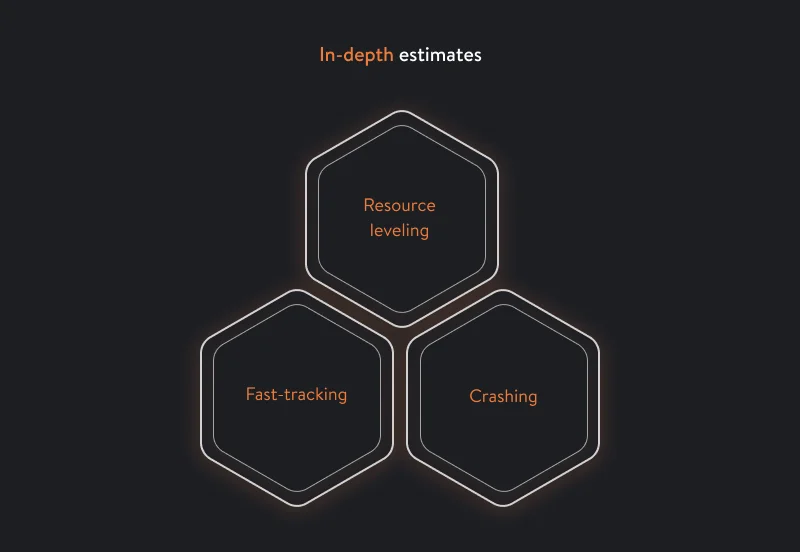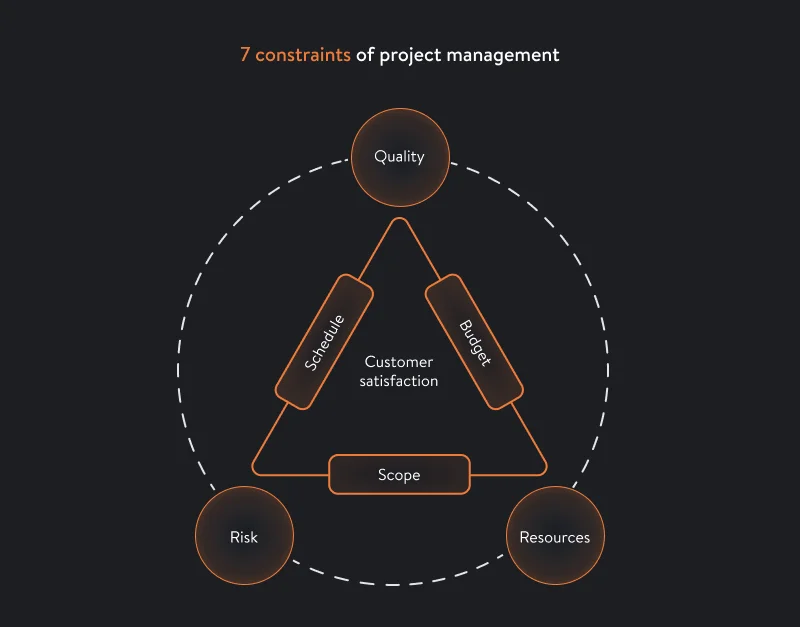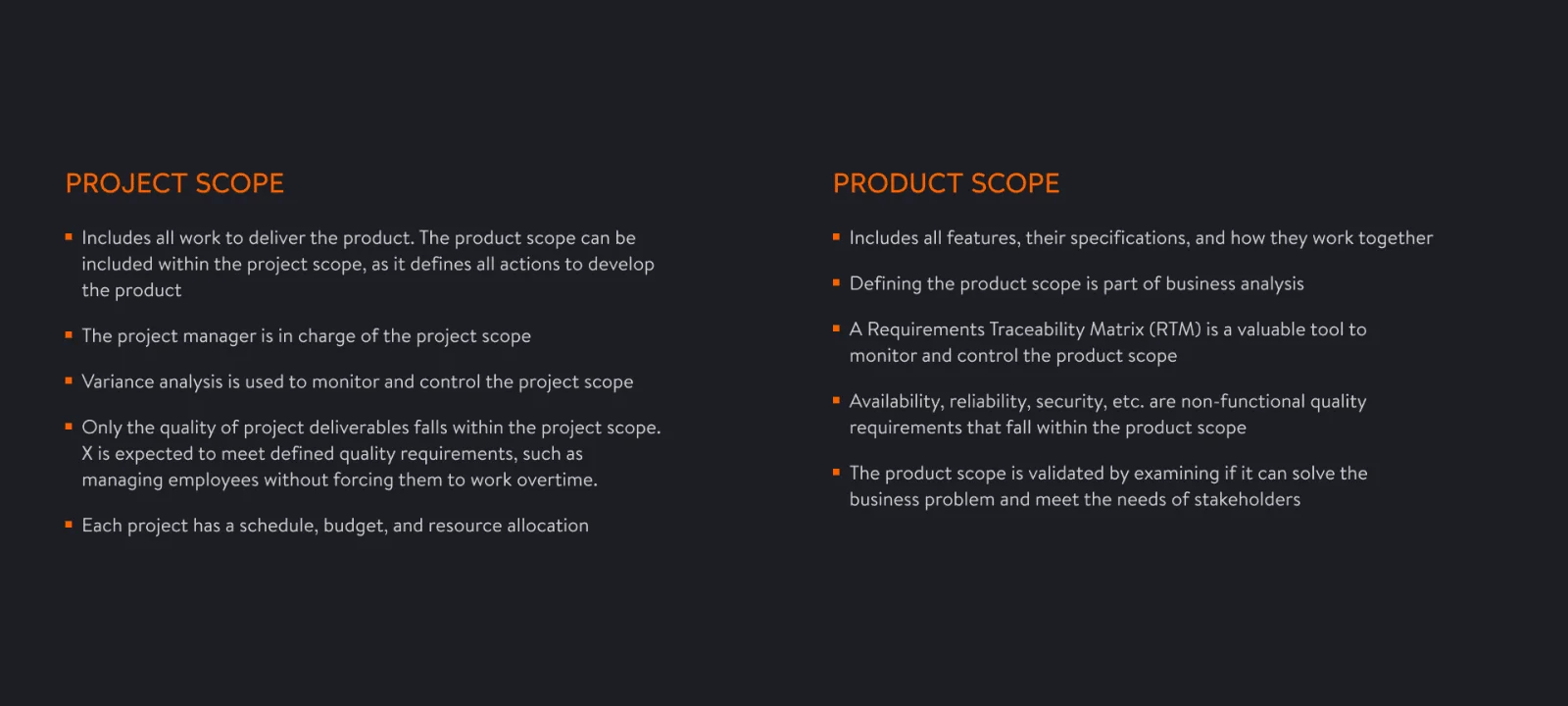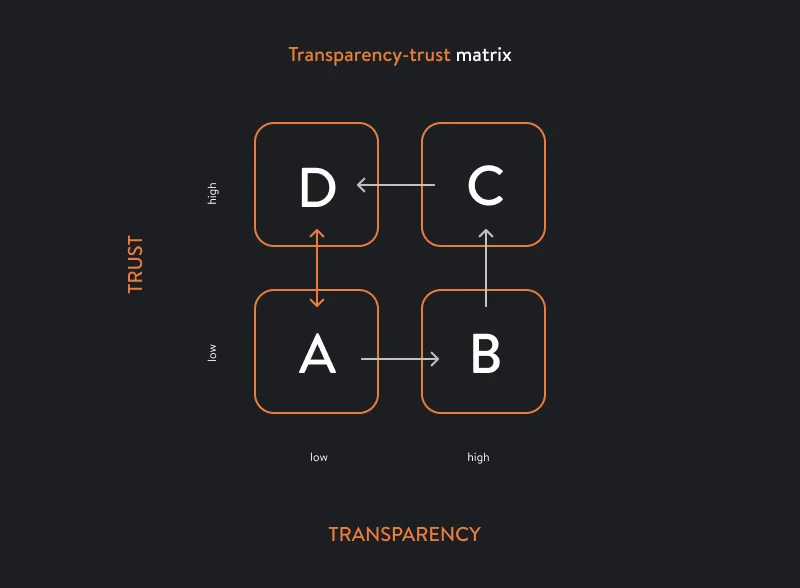Project success is all about meeting customer expectations. A well-established development process entails much more than conducting management evaluations and meeting constraints. But once experts identify every project constraint, it is possible to meet a client’s expectations.
In our article, we introduce an approach to meeting strict project constraints by identifying bottlenecks at the early project stages, and gaining better software.
Let’s start with the basics of constraints management.
What are project constraints?
Project constraints are limitations that restrict the management of a project. In other words, constraints can affect the quality, delivery, and overall result of the project. As constraints are usually interdependent, if you change one constraint, others might be affected.
Сonstraints arise when you have a set of project requirements, a completion date, and other factors that limit how you can approach a project. You may also be constrained by the technology available to you or by a lack of allocated material resources and specialists.
Why consider project constraints?
According to the Project Management Institute (PMI), the triple constraint says that if we want to reduce the schedule while not changing the scope, we must raise the budget. And if we want to increase the scope, we must increase the budget or extend the schedule. Thus, if project stakeholders extend the project scope after the timeline is agreed and financial planning is done, the project manager may not have the time or resources to maintain the agreed quality standard.
You must manage each constraint while balancing the others to achieve high project performance. If you fail to manage your constraints, the result can be low project quality and low customer satisfaction.
By using project management techniques, detailed planning, and effective communication, the development team can greatly improve efficiency and thus product quality.
Now, let’s clarify the main management constraints that we talk about in this article.
Willing to see how we approach software development to drive performance, scalability, maintainability, and rich functionality?
DOWNLOAD YALANTIS SDLCMajor management constraints affecting project quality
When we talk about constraints in IT projects, we mean the basic triangle of constraints: schedule, budget, and scope.

The main requirement for project managers in setting up the development process is to find a balance between the constraints in this triangle.
Next, we’ll show you how to manage constraints through a detailed overview of each constraint.
Scope
A project’s scope is the set of deliverables the project manager guarantees to project stakeholders. The scope refers to specific deliverables that project stakeholders agree on. In most cases, there are no ranges of acceptability for the scope: specific items have been specified, and the stakeholder expects to receive them all — no more, no less.
Yalantis experts define a project’s scope at the beginning of the development process. Further in the project, we use an Agile approach for avoiding misunderstandings among the team and being flexible in the whole management process. The scope of a project depends on its timeline and financial budget. Tight timelines and small budgets tend to limit the scope.
The Yalantis approach to scope management consists of three steps. The first two are creating a scope management plan and requirements management plan. The last step is creating a work breakdown structure (WBS). Based on already collected project requirements, we make a WBS —a summary of the whole scope management plan — for dividing project deliverables and work into small components that are easier to manage.
Using a WBS brings the following benefits for all project stakeholders:
- Increases efficiency of project execution
- Optimizes project scheduling
- Facilitates communication
- Helps the team, client, and stakeholders get their minds around the project
- Helps to prevent work from slipping through the cracks
- Provides a basis for estimating resources, costs, and schedules
Schedule
There are always several tasks in a project, each of which has its specific time frame that project managers must strictly adhere to. Delivering a project on time is usually a critical indicator of its success since any delay usually results in increased costs. The project manager must use their experience and precise estimates to evaluate how long the project will take to complete, which includes anticipating possible delays, setbacks, risks, and other unforeseen events.
The Yalantis team manages time via schedule management. We can precisely estimate a project at the early stages before we have complete project details due to several high-level and in-depth estimates.

For example, we use a Rough Order of Magnitude (ROM) estimate as a high-level estimate. ROM estimates the effort and cost required to complete a project. To calculate it, we estimate the scope three times.
First, we estimate the scope at the level of requirements only, then with a UX estimate, and lastly with a UI estimate. We also apply a certain level of uncertainty for each round of estimates — 50 percent for the SRS (simple random sampling) estimate, 25 percent for the UX estimate, and 10 percent for the UI estimate.
Using the ROM estimate, we can quickly know whether we can cover the entire scope desired by the customer. The main advantage of this kind of estimate is that it allows us to work with customer expectations as early as a week after the discovery phase. Being informed of how much work we can do in a given time frame is a huge time-saver for the client.

Let’s take crashing as one of the in-depth estimates. There is a trade-off between cost and schedule when using this estimate. If the scope of work has not changed and the project is behind schedule, another option to reduce the schedule is to allocate additional resources to the remaining work on the project.
This will help the team complete the project faster. However, since these additional resources were not part of the original plan, there will be additional costs if crashing is used for schedule compression.
Crashing and other estimates that Yalantis experts use to allow the team to understand if we’re fitting within the client’s constraints from the very beginning. Once we have a detailed estimate, we use schedule compression — a technique to shorten an already developed schedule. The goal of schedule compression is to accelerate the speed of the project without sacrificing its quality.
Read also: How we adjusted the development process to the time limits for one of our projects
Budget
The total project budget is another major constraint for the project manager because they need to find ways to complete the project without exceeding the allocated software development budget. Cost management is an ongoing task during the project completion phase because the project manager needs to identify any potential problems that could increase the cost of completing the project on time.
A project budget indicates the maximum amount a team can spend on a particular project.The most important metric we use within budget planning is estimate at completion (EAC). We use EAC as a project cost estimate immediately after the first sprint and then regularly update it. If unpredictable risks are possible, we always warn the client about them. Scope reprioritization is one more helpful step we take to predict the total cost of the project at the very beginning.

At Yalantis, our project managers work in tandem with business analysts to balance these three constraints to deliver the best results. For example, in our recent Healthfully project, we provided our client with a powerful, cost-efficient software solution under strict deadlines.
Read also: What a project manager does at each stage of the software development process
The next step for establishing the probability of project success is determining the other project constraints.
What are the project constraints beyond the basic triangle?
It’s possible to achieve project success using only the triple constraints. However, to implement effective project management strategies, it’s worth paying attention to other project constraints, namely quality, customer satisfaction, risk, and resources.

Let’s consider them in more detail.
Quality
Project quality is a measure of whether a project’s results meet initial expectations. At the same time, project quality is also a constraint, as there are aspects such as lack of communication, poor design or development skills, or too many changes to the project.
If the schedule and budget come up against constraints, the development team in your project still provides the expected results for a client, because the team cannot compromise processes that relate directly to quality.
Read also: Best practices for testing and quality assurance
Customer satisfaction
Customer satisfaction is another constraint to keep in mind because project managers understand that it’s not enough to get everything done on time and within the budget for the customer to be satisfied. Our managers always aim for a project to achieve our client’s overarching business goal. Accordingly, the more focus we keep on what can help achieve that result, the better the product will be at meeting the client’s needs.
Risk
No project is without risks, and it’s crucial to work with them throughout the project. Project managers have tools and techniques that help in choosing the right risk strategy and assessing the impact of risks on project constraints. So-called risk tolerance should be monitored by project managers too. Experts at Yalantis assess risks, examine the probabilities of significant ones, and estimate their potential impact on the project if they occur.
Resources
When managing resource constraints, the project manager also considers the availability of resources, both material and labor. While this constraint is related to the budget, there are also additional resource constraints related to availability and affordability.
Let’s take a look at who monitors compliance with certain limitations and what roles you should be aware of in the process of constraints management.
Read also: How we met strict project deadlines building a real-time election data processing solution
Who manages constraints in the software development process?
To identify the primary limits of the project and save resources like time and financial budget, the Yalantis approach starts with creating a solution group. Each solution group consists of team members including a business analyst, solution architect, and delivery manager. They are in charge of figuring out the project’s high-level requirements as early as possible. They also comply with all constraints during the solution creation.
The business analyst sets up the process of working with requirements (recording them in the requirements management plan) to avoid additional risks, deadline shifts, etc. They also create a vision for the scope in the form of a story map and clarify the product requirements, while the delivery manager is in charge of meeting the project requirements.

In turn, the delivery manager must ensure the reliability of every team member involved in the development process. Teammates should have a clear understanding of their constraints, beyond their tasks and responsibilities. The delivery manager also organizes the development team and collaboration between developers, describing the developers’ tasks in detail. This allows us to streamline processes and coordinate efficiently without wasting the client’s time.
At Yalantis, we consider constraints management not only as part of project management but as a set of discrete actions in the development process. Executing them, Yalantis ensures quality project management and guarantees project success. Let’s find out more about the actions we take.
Best practices to effectively deal with constraints
Failure to complete the project within the constraints can harm its overall success. However, there are steps Yalantis experts take to avoid or minimize the impact of these constraints on the project. Here are some best practices:

Create a risk management strategy. A well-planned risk management strategy helps to identify, assess, and prepare for any potential risks. It enables you to deal with uncertainties and challenges head-on and empowers you to build more high-quality project results. With a strategy in place, you can proactively resolve internally identified risks. Besides, a risk management strategy empowers your decision-making by assessing threats well in advance.
Develop a strategy at every stage of the project. A proper plan helps you avoid typical constraints. The scope of the project can be understood with a work breakdown structure where each phase is broken down into tasks. A detailed listing and schedule of team member assignments will also be necessary. In this way, we can track the duration and control the costs of each phase. What’s more, we can take the necessary steps if something doesn’t go as planned.
Smartly leverage resources. Balancing human resources is necessary, first of all to prevent stress and burnout due to overstretched resources. On the other hand, managers should leverage human and non-human resources to avoid underutilization of the talent base so as not to reduce productivity. In addition, inefficient use of resources can lead to project delays and budget overruns. Therefore, the optimal involvement of project participants is key to the business’s profitability and sustainability.
Ensure transparent communication. Transparent communication is a critical factor for successfully managing project constraints. With transparency, all stakeholders know the project’s priorities and objectives. Let’s check the transparency-trust matrix:

At the beginning of the project, we are always at point A. The new client does not yet know us, and thus we do not have a credit of trust. Our main goal is to increase project transparency and get to point C.
We work in such a way that the client always understands what the team is doing and when to expect the result. Tools that help to increase transparency are:
- First meeting. At the beginning of the project, we hold an introductory meeting with the client, introducing not only the people with whom we will work but also the methodologies by which the project will be conducted and documented.
- Communication plan. We create a communication plan together with the client, stating when and with what tools our meetings will take place.
- Recurring meetings and reports. We discuss with the client how often and in what form we will provide them with reports on the team’s progress. At the beginning of a project, our experts additionally give small updates on progress to the client once or twice a week.
Conclusion
Constraints management consists of many factors, and sometimes applying a few techniques will not be enough to achieve success. Managing all existing constraints is key because the efficiency and productivity of development directly depend on the quality of constraints management. If you need to manage constraints in your project, contact us.
Need to manage constraints for your next project?
We have the expertise you need to manage all your constraints.
Rate this article
5/5.0
based on 1,112 reviews








